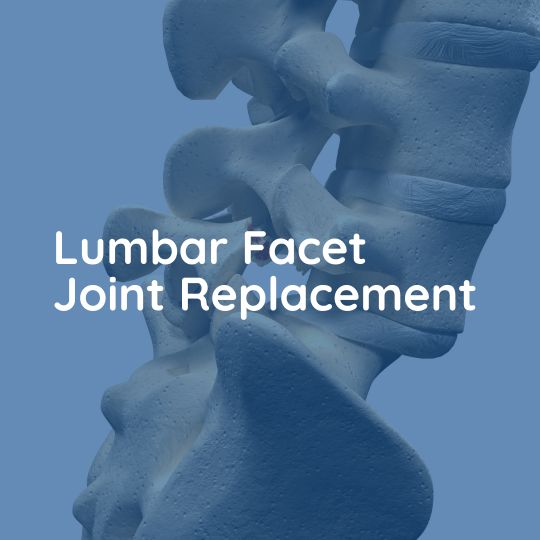
Lumbar Facet Joint Replacement
Lumbar Facet Joint Replacement treatment is for those patients who have canal stenosis in the lumbar spine (narrowing of the spinal canal causing compression of the nerve roots) often have difficulty with walking. If the cause is a thickening of the joints at the back of the spine (the facet joint) which can thicken when damaged and cause narrowing of the space for the nerves. Many other treatments are available and it is usually wise to have tried these first.
Causes
Symptoms
Treatment
Causes
Lumbar Facet Joint Replacement is typically recommended for patients with severe facet joint arthritis in the lower back. This condition can be caused by a number of factors, including aging, wear and tear, and degenerative disc disease.
Symptoms
The symptoms of facet joint arthritis can vary depending on the individual, but may include lower back pain, stiffness, and reduced range of motion.
Treatment
Non-surgical treatments such as physical therapy, medication, and injections are usually the first line of treatment for facet joint arthritis. However, if these treatments do not provide relief, Lumbar Facet Joint Replacement may be recommended. During the procedure, the damaged facet joints are removed and replaced with artificial joints.
How is it done?
The patient is positioned face-down under general anesthetic on a well-cushioned mattress. An incision is made on the back of the spine over the affected level typically 8 – 10cm in length. The muscles are retracted to the sides to allow exposure of the damaged joints and the bone in between. This area of bone together with both of the joints left and right are removed. This allows a very comprehensive release of the nerve roots and freeing of the spinal canal. Once this has been done screws are positioned into the bone through the pedicles above and below the damaged joints which have been removed and these are joined with a system known as the TOPS (total posterior system) which is then secured onto the screws using some nuts.
What are the results like?
Most patients are in hospital for 7 – 10 days but could be out sooner if they feel up to it. The patients are mobilized quickly within 24 hours by the physiotherapists and are taught some simple exercises to restore muscle function. They are usually provided with lumbar support to wear for 4 – 6 weeks at which stage they are reviewed in the outpatient clinic with x-rays. If all is well on the x-rays serious physiotherapy starts on a regular basis thereafter lasting typically for 6 – 8 weeks.
More Spinal Conditions

Spine Tumor Surgery in Karachi: Leading the Way with Prof. Dr. Akbar Ali Khan, Best Neurosurgeon in Pakistan

Advancing Spinal Health: Understanding Vertebrectomy with Prof. Dr. Akbar Ali Khan
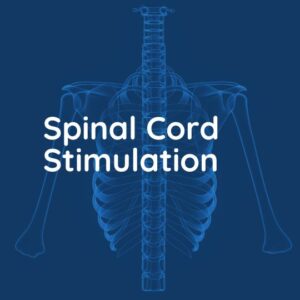
Spinal Cord Stimulation

Kyphoplasty and Vertebroplasty
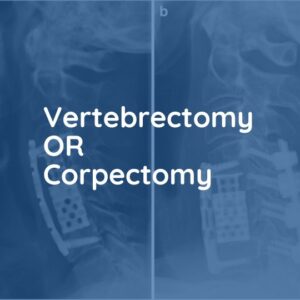
Vertebrectomy/Corpectomy

Foraminotomy
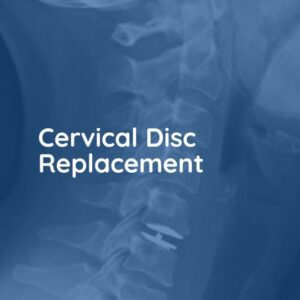
Cervical Disc Replacement

Anterior Cervical Discectomy and Fusion

Correction of Scoliosis

Thoracic Discectomy
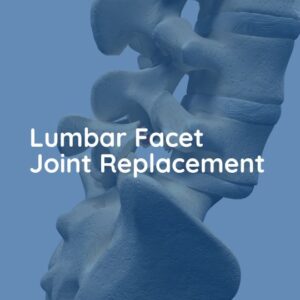
Lumbar Facet Joint Replacement
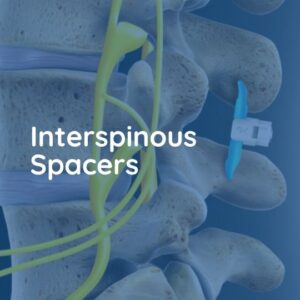
Interspinous Spacers

Endoscopic Lumbar Discectomy

Laminectomy
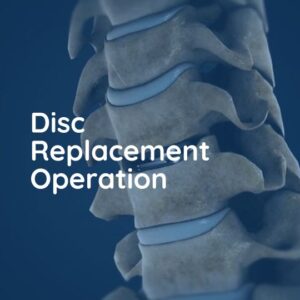
Disc Replacement Operation

Posterior Lumbar Fusion


